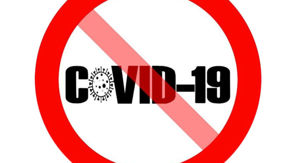3 mins read
Answering this straightforward question may change your business forever: What does it mean to be a leader in your organization?
As a leadership coach and trainer, I am often asked, "What is the best leadership training for my organization?" My response is always, "What change do you want to make, and what makes that change important for your organization?" I ask those questions because most organizations use leadership training to react to an adverse behavioral or systemic trend in their operations. That simple question almost always leads to discovering a simple truth: Leaders in the organization don't know what it means to lead effectively. Effective leaders lead in a way that encourages their people and promotes business sustainability.
Rather than doing reactionary training, I encourage my clients to develop a leadership framework. Developing a framework for leadership includes training but also helps define your leadership culture. A clear picture of your leadership culture allows leaders to operate effectively as they lead your organization through change, significantly increasing overall resiliency. To begin building your framework, there are three broad categories in which you can start to add structure to the competencies you expect your leaders to exhibit.
1. People leading themselves
Let's face it; micromanagement is dead. Leaders can't always be everywhere looking over the shoulders of their employees, and why would you want that anyway? Instead of micromanagement, here are four things you can do:
a. Ensure you and all your direct reports understand their role.
b. Understand and respect the role of others.
c. Know and understand the importance of organizational behavior norms, performance standards and expectations.
d. Provide a safe employee input and feedback process that is understood by the employees and actioned by leaders.
2. People leading people
a. Create opportunities to connect with people. Intentionality is important. People want to be heard and acknowledged and know that you care about what they say. When leaders connect with their employees, they should actively listen for opportunities to understand better what their employees are telling them and why.
b. Create a culture where people feel safe when expressing their thoughts and opinions. There should never be a situation where a person using appropriate professional behaviors should feel their professional or social reputation is in jeopardy for offering input.
c. Create opportunities to break the silos. It is common practice to include only direct stakeholders when we build project teams or discuss setbacks. Often it is the same experts time and time again. Use projects and change management opportunities to hear new and different thoughts. Not only will you generate fresh ideas, but you will also build trust between your teams and the individual employees themselves.
3. People are leading organizations
These macro actions will take you toward your vision of the future.
a. Build team capacity through individual and team knowledge growth. Create opportunities for people to pursue their learning journey and learn as teams. Today, team learning is one of the most significant opportunities for organizations. Discussing setbacks and lessons learned across an entire organization will lead to solutions. Employees each bring tacit knowledge learned through years of experience. Why not make this a strategic advantage?
b. Develop knowledge networks. Knowledge is how we grow organizations in a meaningful and measured way. There are generically two types of knowledge networks. First is your internal network, where professionals inside your organization share and discuss lessons learned and emerging knowledge. The second and rarely used knowledge network is the external network. External knowledge networks accelerate your learning, save money by short-circuiting the iterative learning process and help you attract new talent.
c. Build a mental model change process. We build businesses based on operating assumptions. Ideally, you gather as much information as possible and then make decisions that drive your business. We rarely test those assumptions once a decision has been made. Often, we develop key performance indicators that measure the outcomes of our findings and take corrective actions when things go in the wrong direction. Because we don't challenge our original assumptions, we end up with adjustments that never entirely solve our problems and may even cause new issues. Developing single and double-loop mental models will give you a framework to work through challenges.
Leadership training is essential to build a resilient and sustainable business. A leadership framework supported by targeted and intentional training is imperative. So, before signing up for that leadership training program, please ensure it supports your leadership development framework.











